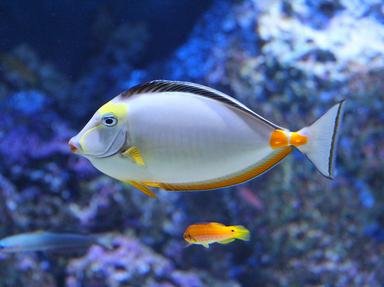Quiz Answer Key and Fun Facts
1. Before I introduce myself, let's make sure you know what a turbot is. What is my scientific name?
2. I started life as an egg, spawned by my mother. How many eggs does each turbot lay?
3. As a newly hatched turbot, how do I swim?
4. As an adult turbot, at what depth will you normally find me?
5. Where will you find me if I'm a true turbot?
6. As a normal adult turbot, where are my eyes?
7. What kind of fish is a turbot?
8. What is the maximum length that a turbot will grow to?
9. Which of these parasites can inhabit a turbot?
10. What, you still want to eat me after all that? (sniff) How many fillets can you get from a turbot?
Source: Author
Mugaboo
This quiz was reviewed by FunTrivia editor
Tizzabelle before going online.
Any errors found in FunTrivia content are routinely corrected through our feedback system.

